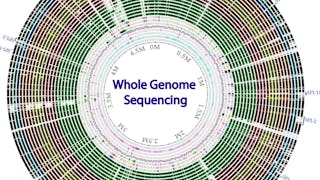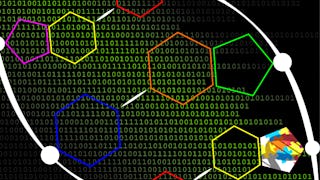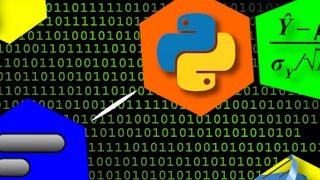In Spring 2011, thousands of people in Germany were hospitalized with a deadly disease that started as food poisoning with bloody diarrhea and often led to kidney failure. It was the beginning of the deadliest outbreak in recent history, caused by a mysterious bacterial strain that we will refer to as E. coli X. Soon, German officials linked the outbreak to a restaurant in Lübeck, where nearly 20% of the patrons had developed bloody diarrhea in a single week. At this point, biologists knew that they were facing a previously unknown pathogen and that traditional methods would not suffice – computational biologists would be needed to assemble and analyze the genome of the newly emerged pathogen.



Genome Assembly Programming Challenge
This course is part of Data Structures and Algorithms Specialization



Instructors: Neil Rhodes
45,799 already enrolled
Included with 
(346 reviews)
Skills you'll gain
Details to know

Add to your LinkedIn profile
See how employees at top companies are mastering in-demand skills

Build your subject-matter expertise
- Learn new concepts from industry experts
- Gain a foundational understanding of a subject or tool
- Develop job-relevant skills with hands-on projects
- Earn a shareable career certificate

There are 3 modules in this course
In April 2011, hundreds of people in Germany were hospitalized with a deadly disease that often started as food poisoning with bloody diarrhea. It was the beginning of the deadliest outbreak in recent history, caused by a mysterious bacterial strain that we will refer to as E. coli X. Within a few months, the outbreak had infected thousands and killed 53 people. To prevent the further spread of the outbreak, computational biologists all over the world had to answer the question “What is the genome sequence of E. coli X?” in order to figure out what new genes it acquired to become pathogenic. The 2011 German outbreak represented an early example of epidemiologists collaborating with computational biologists to stop an outbreak. In this Genome Assembly Programming Challenge, you will follow in the footsteps of the bioinformaticians investigating the outbreak by developing a program to assemble the genome of the deadly E. coli X strain. However, before you embark on building a program for assembling the E. coli X strain, we have to explain some genomic concepts and warm you up by having you solve a simpler problem of assembling a small virus.
What's included
2 videos4 readings1 programming assignment
DNA sequencing approach that led to assembly of a small virus in 1977 went through a series of transformations that contributed to the emergence of personalized medicine a few years ago. By the late 1980s, biologists were routinely sequencing viral genomes containing hundreds of thousands of nucleotides, but the idea of sequencing a bacterial (let alone the human) genome containing millions (or even billions) of nucleotides remained preposterous and would cost billions of dollars. In 1988, three biologists (independently and simultaneously!) came up with an idea to reduce sequencing cost and proposed the futuristic and at the time completely implausible method of DNA arrays. None of these three biologists could have possibly imagined that the implications of his own experimental research would eventually bring him face-to-face with challenging algorithmic problems. In this module you will learn about the algorithmic challenge of DNA sequencing using information about short k-mers provided by DNA arrays. You will also travel to the 18the century to learn about the Bridges of Konigsberg and solve a related problem of assembling a jigsaw puzzle!
What's included
5 videos1 programming assignment
Our discussion of genome assembly has thus far relied upon various assumptions. In this module, we will face practical challenges introduced by quirks in modern sequencing technologies and discuss some algorithmic techniques that have been devised to address these challenges. Afterwards, you will assemble the smallest bacterial genome that lives symbiotically inside leafhoppers. Its sheltered life has allowed it to reduce its genome to only about 112,091 nucleotides and 137 genes. And afterwards, you will be ready to assemble the E. coli X genome!
What's included
3 videos1 programming assignment
Earn a career certificate
Add this credential to your LinkedIn profile, resume, or CV. Share it on social media and in your performance review.
Instructors

Offered by
Explore more from Algorithms
 Status: Free Trial
Status: Free Trial
University of California San Diego


Technical University of Denmark (DTU)
 Status: Free Trial
Status: Free Trial
Johns Hopkins University
 Status: Free Trial
Status: Free Trial
Johns Hopkins University
Why people choose Coursera for their career




Learner reviews
346 reviews
- 5 stars
70.89%
- 4 stars
16.42%
- 3 stars
8.06%
- 2 stars
2.59%
- 1 star
2.01%
Showing 3 of 346
Reviewed on Jul 27, 2019
May be the course would have given more hints. But a learned a lot from the projects.
Reviewed on Oct 20, 2020
Really enjoyable and also challenging specialization. I also enjoyed this capstone too. I gathered my interest in Algorithms and Bioinformatics field.
Reviewed on Sep 5, 2020
It's a great experience with learning a Genome Assembly.
New to Algorithms? Start here.

Open new doors with Coursera Plus
Unlimited access to 10,000+ world-class courses, hands-on projects, and job-ready certificate programs - all included in your subscription
Advance your career with an online degree
Earn a degree from world-class universities - 100% online
Join over 3,400 global companies that choose Coursera for Business
Upskill your employees to excel in the digital economy
Frequently asked questions
Access to lectures and assignments depends on your type of enrollment. If you take a course in audit mode, you will be able to see most course materials for free. To access graded assignments and to earn a Certificate, you will need to purchase the Certificate experience, during or after your audit. If you don't see the audit option:
The course may not offer an audit option. You can try a Free Trial instead, or apply for Financial Aid.
The course may offer 'Full Course, No Certificate' instead. This option lets you see all course materials, submit required assessments, and get a final grade. This also means that you will not be able to purchase a Certificate experience.
When you enroll in the course, you get access to all of the courses in the Specialization, and you earn a certificate when you complete the work. Your electronic Certificate will be added to your Accomplishments page - from there, you can print your Certificate or add it to your LinkedIn profile. If you only want to read and view the course content, you can audit the course for free.
If you subscribed, you get a 7-day free trial during which you can cancel at no penalty. After that, we don’t give refunds, but you can cancel your subscription at any time. See our full refund policy.
More questions
Financial aid available,



